Managing eDiscovery permissions in Microsoft Purview is crucial for compliance, legal, and data security needs. Today, we’ll walk you through assigning eDiscovery permissions in the Microsoft Purview compliance portal.
First, sign in to the compliance portal https://purview.microsoft.com/ using an account that has the necessary permissions to assign roles. You must be a member of the Organization Management role group or have the Role Management role.
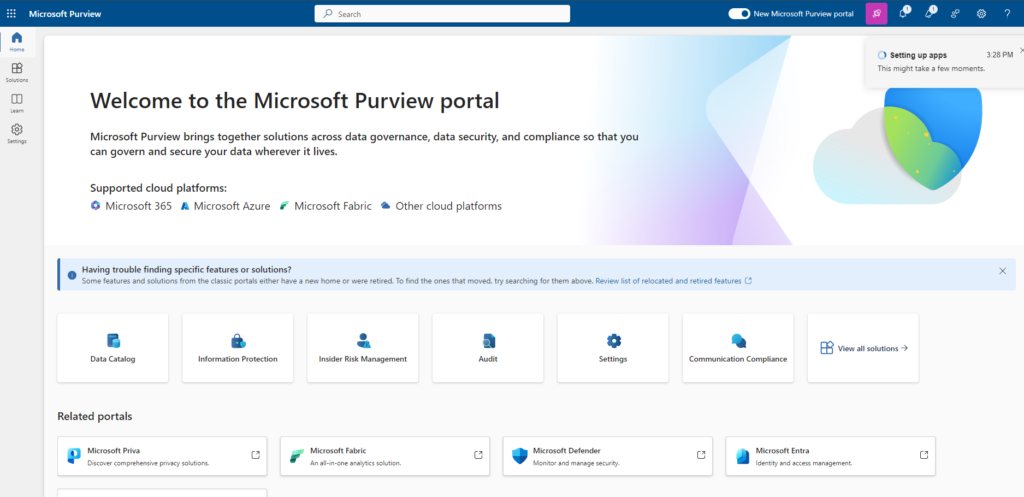
In the left pane, click on the Settings.
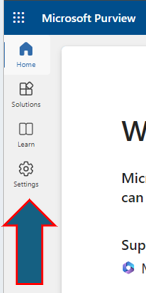
Then Role groups.
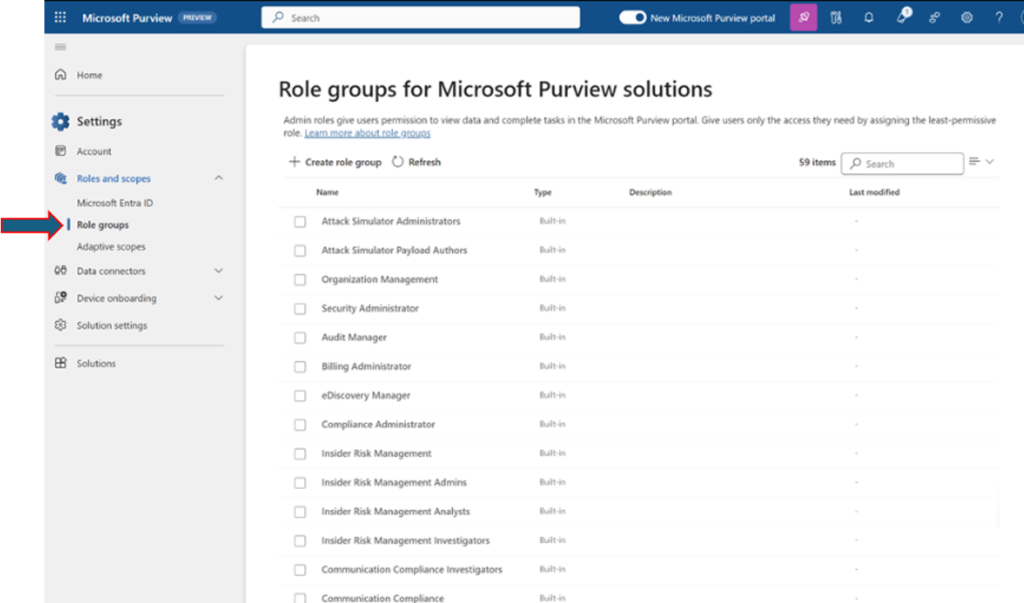
If you use the old Compliance portal, navigate to Roles & scopes and select Permissions. On the Permissions page, under Microsoft Purview solutions, click on ‘Roles’.
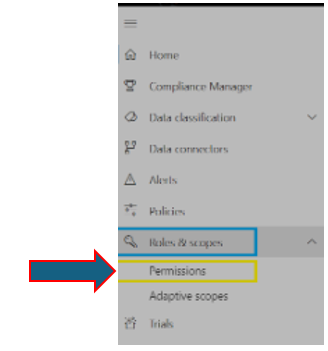
If you don’t see Role groups or Permissions, it means you are missing the Role Management role.
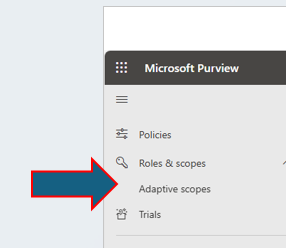
On the Role groups page, find and select ‘eDiscovery Manager’. This is the primary role group for managing eDiscovery tasks.
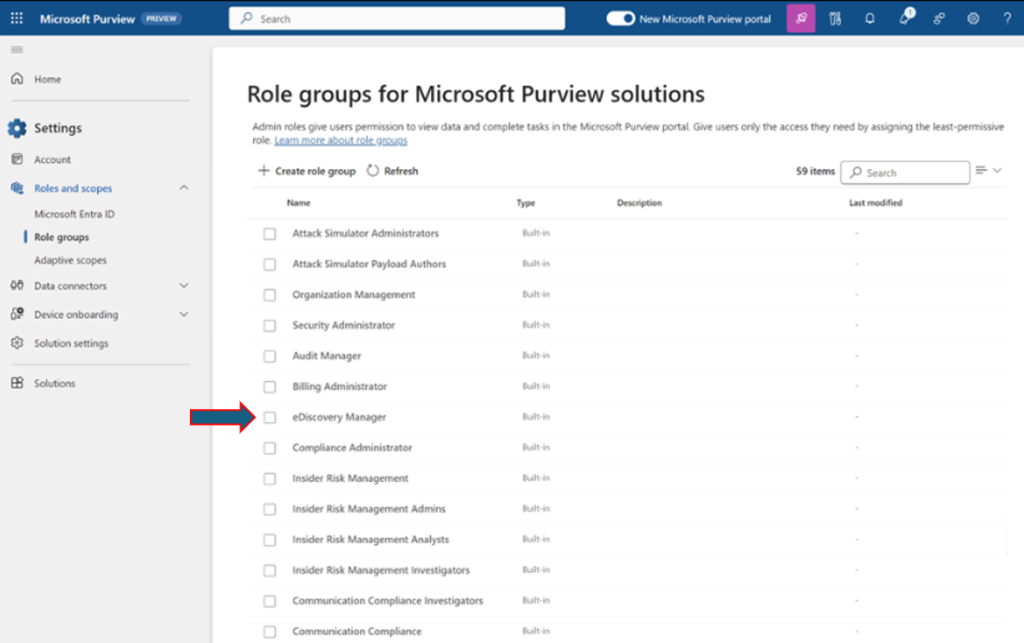
In the eDiscovery Manager pane, you can assign users to two subgroups: eDiscovery Manager and eDiscovery Administrator.
To assign a user as an eDiscovery Manager, click ‘Choose users’ in Manage eDiscovery Manager,
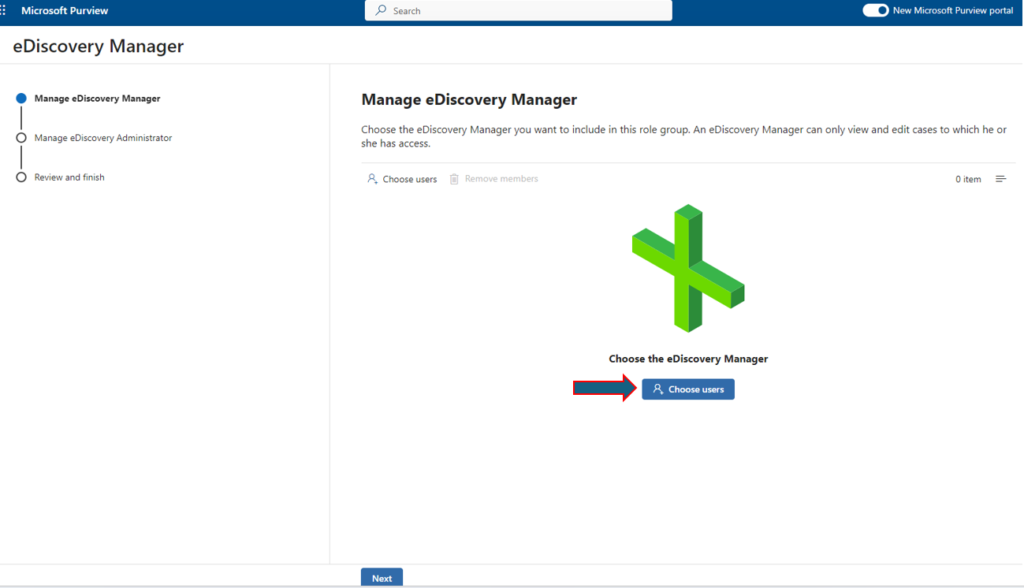
then choose ‘Select users’. Search for the user you want to add, select them, and click ‘Next’.
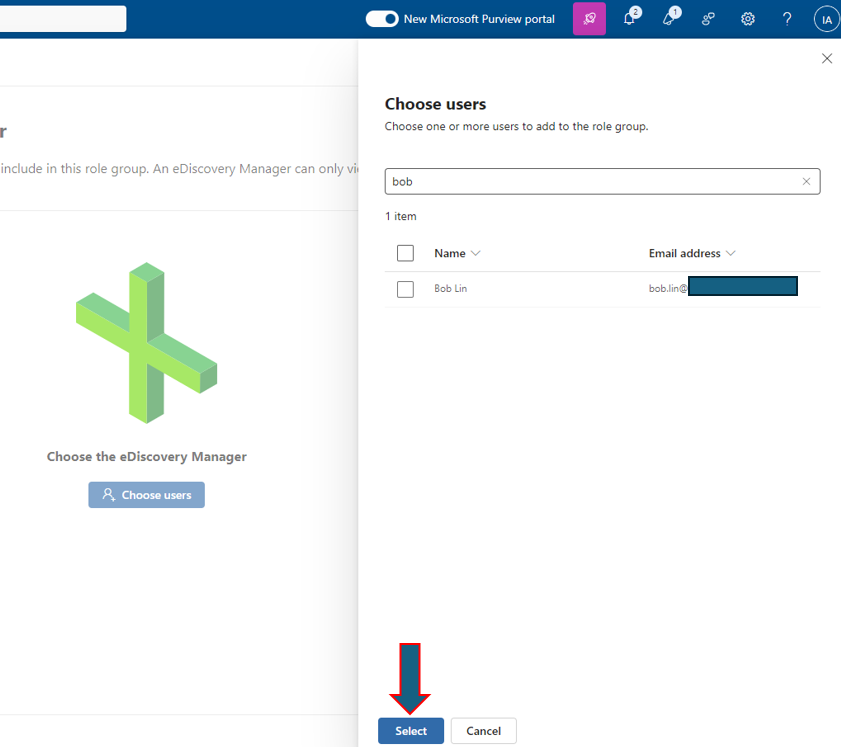
To assign a user as an eDiscovery Administrator, repeat the process but choose the Administrator role group. Administrators have broader access and can manage any case within the organization.
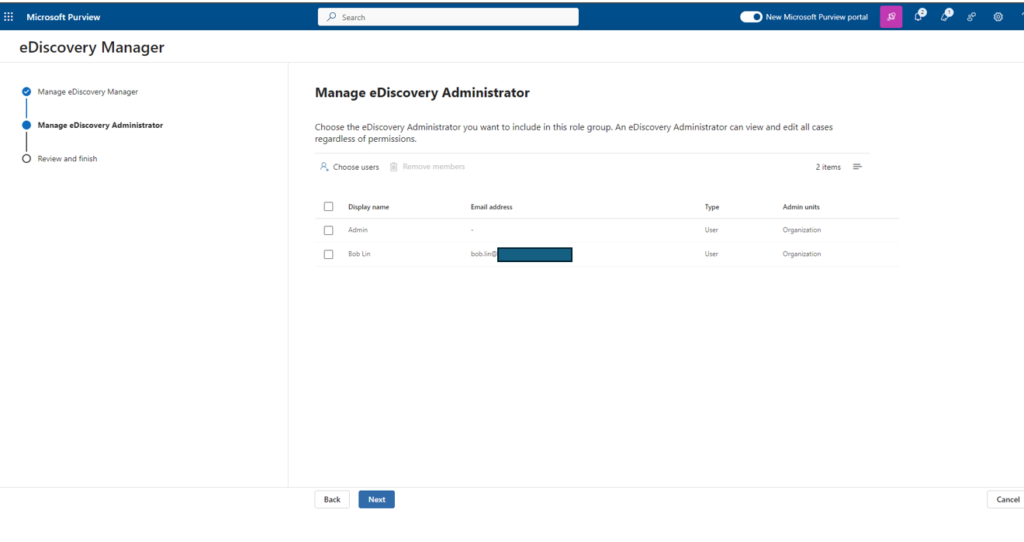
Once all users are added, review your changes, and click ‘Save’. Your selected users now have the assigned eDiscovery permissions.
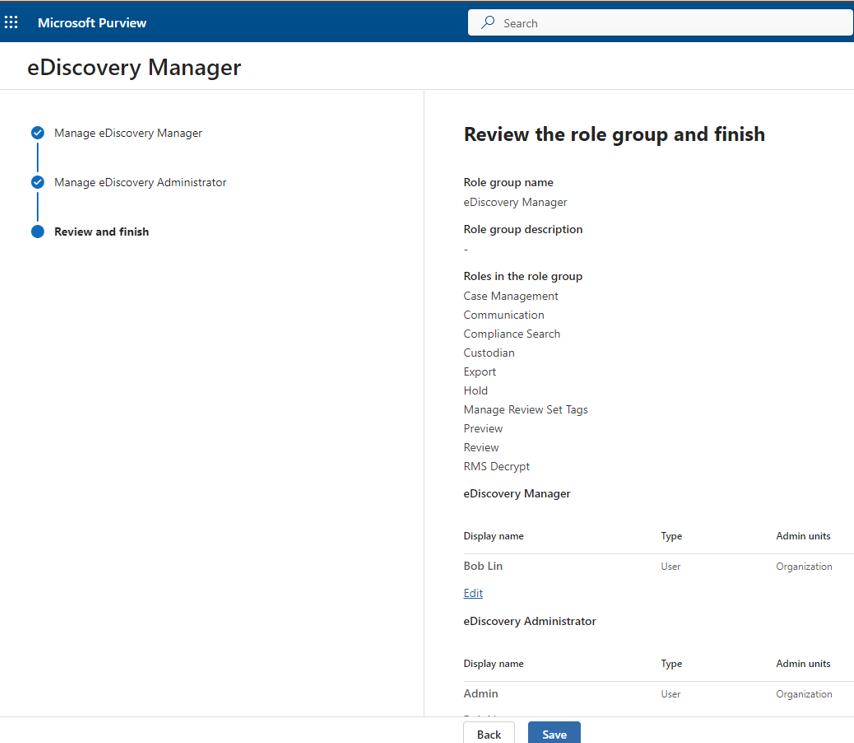
With these steps, you can effectively manage eDiscovery permissions in Microsoft Purview, ensuring your organization’s compliance and data security needs are met. For more details on roles and permissions, explore the Microsoft Purview compliance portal.